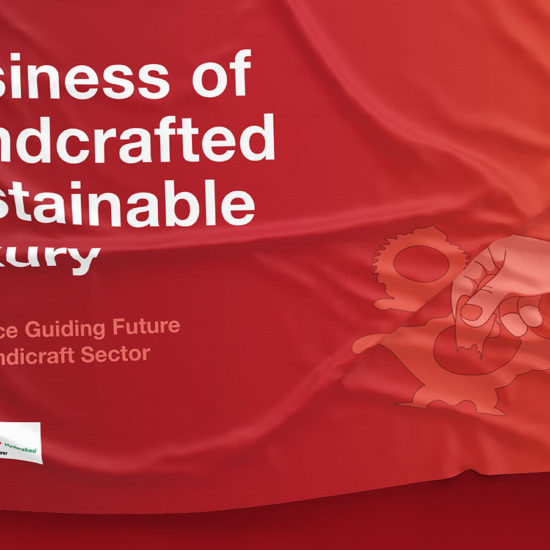WRI India, Low Carbon Mobility Plan in Bhubaneswar, Odisha
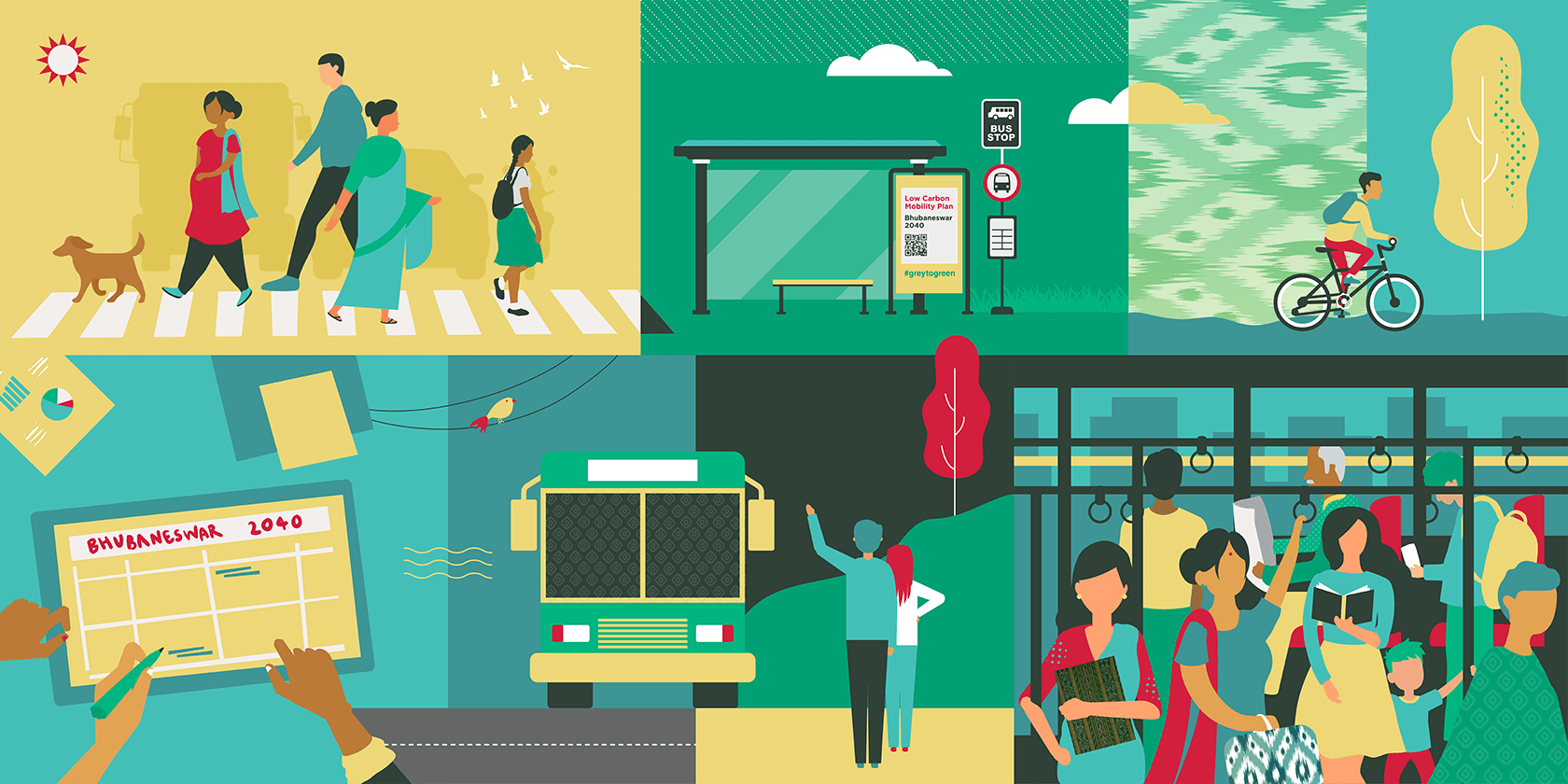
Key Stats
– Bhubaneswar has a population of over 1 million people (as per the 2011 census).
– The average PM 2.5 Levels of the city are usually above 30 and the air-quality is unhealthy for sensitive groups.
– Auto rickshaws in Bhubaneswar contribute to the 24% of total trips in the city whereas the desirable standard is a mere 5%.
– City buses merely make 6% of the total daily trips, and there is lack of any other robust public transport system in the city.
Context
Bhubaneswar is a rapidly growing city with a concentrated population density and an alarmingly high dependency on private vehicles (more than 80%). This gives rise to a host of problems in consequence, such as higher congestion, rises in pollution and a lot of road safety issues as well.
To address this challenge, GIZ is supporting Bhubaneswar to develop a Low Carbon Mobility Plan (LCMP), a strategic vision document and mobility blueprint for the city to develop and monitor its transport sector. It envisions a transit-oriented and child-friendly city with a compact urban form that promotes active, connected and sustainable mobility choices. The plan is developed in partnership with the Housing and Urban Development Department, Government of Odisha and the Bhubaneswar Development Authority, and will provide a vision for 2040 with goals, targets and proposal for policies and measures.
The Problem
Over the last decade (2004-2014), the number of vehicles in Bhubaneswar have increased almost three-fold. Along with rapid increase in two-wheelers and four-wheelers, the city has observed a swift increase in 3-wheelers (auto rickshaws), which has increased at an alarming rate of 13% per annum, more than the national average. This is evident from the fact that auto rickshaws are sought after as a primary mode of ‘transportation’ by the residents, after private vehicles. Thus auto rickshaws in Bhubaneswar contribute to the 24% of total trips in the city which is far more than the desirable standard of 5% for a city of the size of Bhubaneswar. On the other hand city buses merely carry 6% of the total trips, and there is lack of any other robust public transport system in the city.
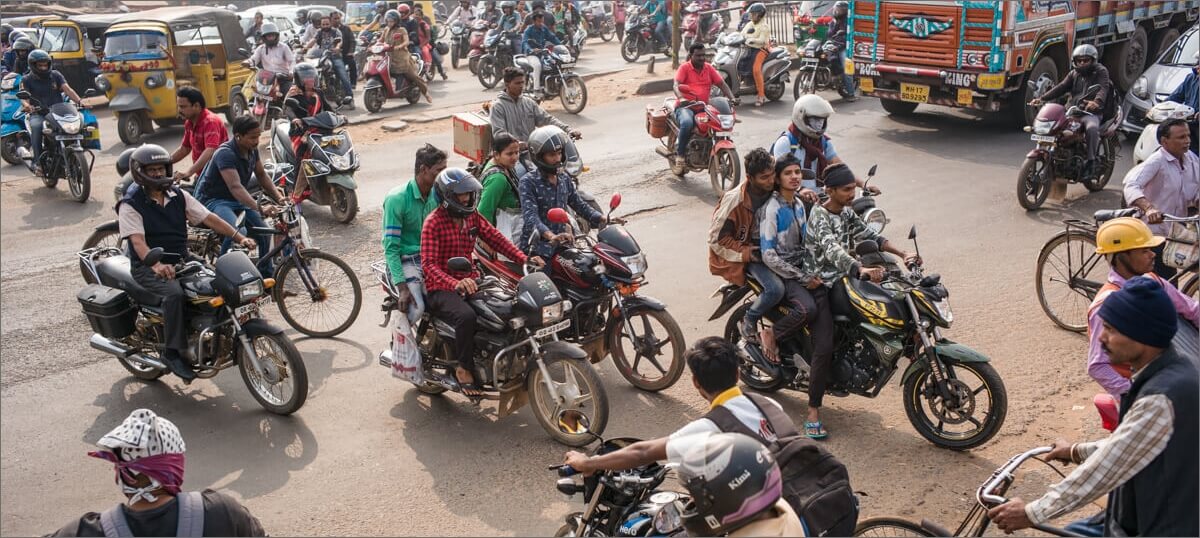
The Brief
The brief given to us was simple: to replicate an ideal, working, modern Bhubaneswar through design and introduce LCMP to the locals in an interesting, yet inclusive manner.
Strategy
Wishbox decided to use design as a strategic tool and decided to adopt a plan that would highlight the following:
1. To showcase Bhubaneswar as a modern city that is ready to change
2. To showcase inclusivity of public transport, across genders, ages and professions
3. To showcase Bhubaneswar as a city that has evolved into a city full of greens and open spaces, as result of the successful implementation of the LCMP.
Our strategy included showing the immediate benefits to a robust city that followed the suggestions of the LCMP, such as greener spaces, lesser traffic, lesser pollution, to showing consequential and peripheral benefits as well, such as a rise in local wildlife, over all health benefits, along with economic savings.
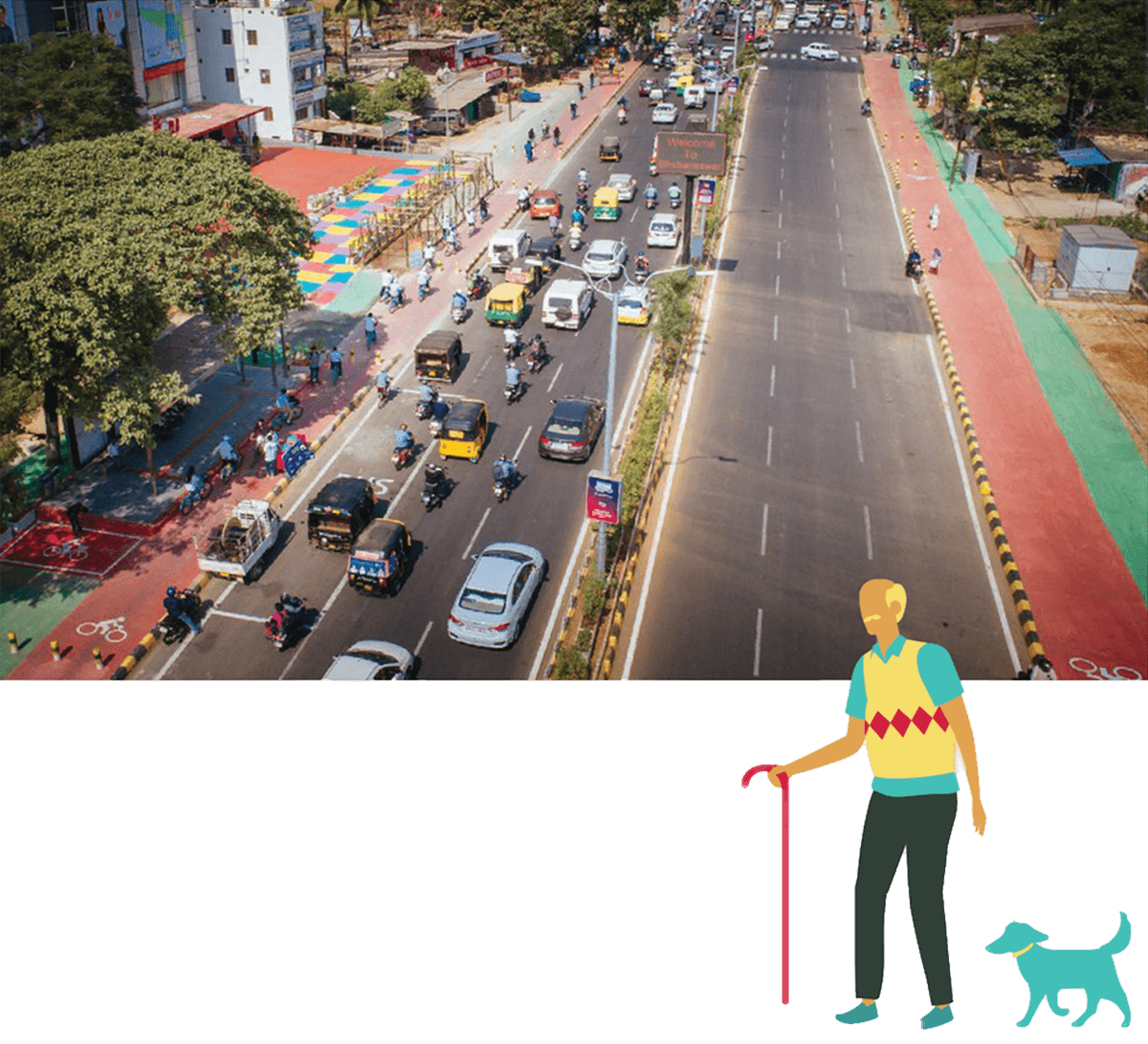
Approach
Our work was really cut out for us in the project because we were to cause attitudinal shifts and suggest habit changes to people who were very much functioning already in the congested ecosystem of the rapidly growing city of Bhubaneswar.
It was our job to lay out a more lucrative alternative to city locals and show them what their city could really be like, if all aspects of the LCMP were to go off smoothly.
After our initial rounds of research, it was determined that nudges in habit and behaviour would hit hard if they were made at places that were in fact, quite congested in the city. This was so that locals could get to know about the LCMP while they were actually stuck in a traffic jam, or waiting for an autorickshaw for example, so that the contrast in their ideal city and their every-day reality would be more tangible.
Because of this, we immediately knew that the messaging we created to go with our design had to be easy-to-read and impactful. This is because we wanted to target a fast-moving local audience, who would be getting hit with our messaging on busy roads or intersections and would not have a lot of time to read our messaging at leisure. We also knew that posters would be a good-way for our messaging to be placed intermittently through the city, since these would be easily accessible to strata of society in Bhubaneswar.
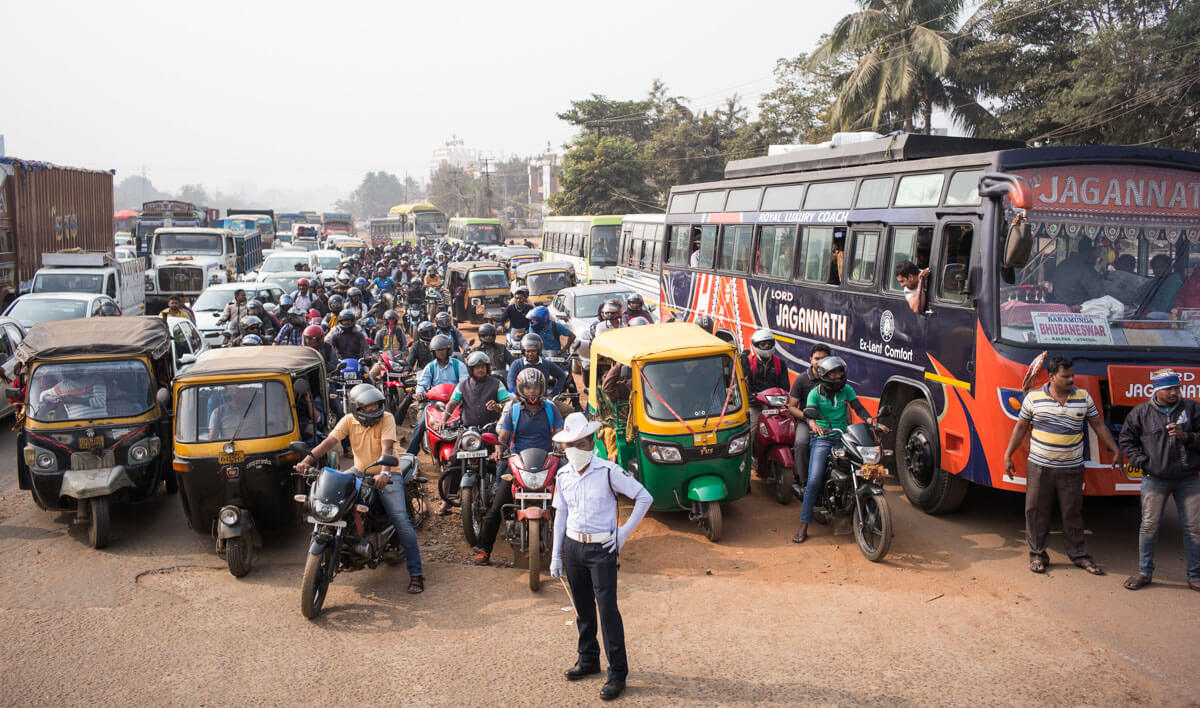
Our approach to the brief was two-fold; to create impactful messaging that would be immediately relatable, and to design posters to go with that messaging, to drive that point home.
The Concept
Content
#greytogreen
This concept is largely transformative and focuses on attitudinal change that would lead to smarter lifestyle choices. The idea is rooted in the transformation of streets and public spaces from dull and polluted (grey) to vibrant and healthy (green) though the low carbon mobility plan.
This concept provides scope for information and clearly states tangible benefits such as cleaner air, better health and accessible mobility.
The format ‘from _________ to _________’ is highly flexible and is applicable across a myriad of green mobility strategies under the overarching gambit of ‘from passive to active’. This is central to the idea of mobility in general and highlights ideas such as movement, change, and transformation.
Design
The campaign needed to have a strong mass-appeal, so the art style used is easily identifiable. We hoped to create a campaign that would:
1. Create a recognisable identity that would be easy to understand.
2. Be extremely eye-catchy, so as to have maximum impact on people even if they are not stationary.
3. Allow for use of images. These could be specific to Odisha or can focus solely on people.
4. Be flexible and easy to adapt across numerous collaterals.
5. Make people want to know more.
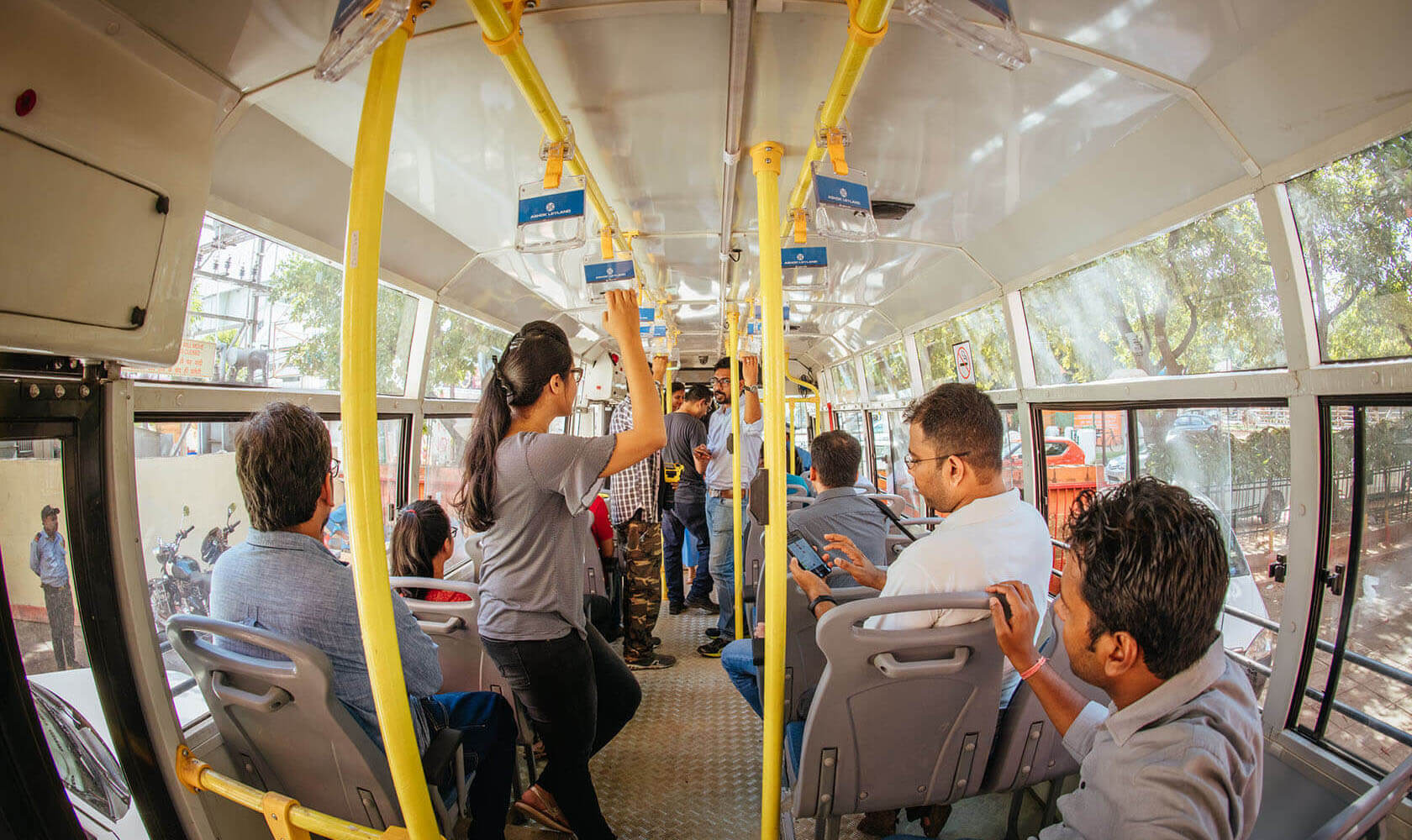
Design Implementation
We decided to go for a visual style that would immediately look modern, to correctly represent urban Odisha. It was important to find a balance and create a style that while looking ‘urban’, had all the markings of familiarity. To achieve a sense of cultural familiarity, we integrated images of patterns from the traditional craft technique, Ikat, into the artworks.

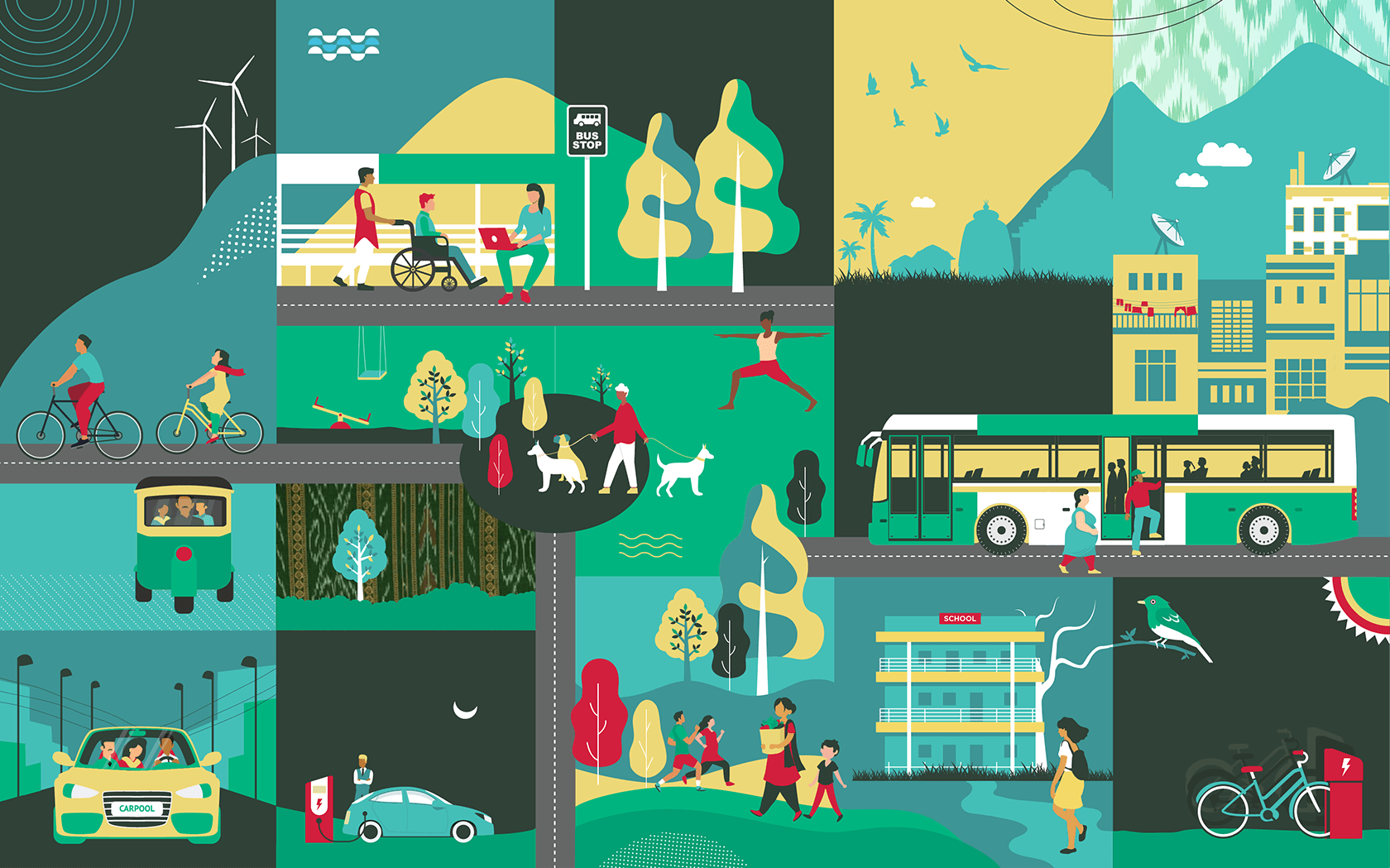
We decided to use the basis of generative design. This meant that we broke our design down into grids, which when put together, would form a beautiful and liveable city. These grids could be re-arranged to show different scenes of the same city and depict symbols of green mobility. We strategically chose this style so as to correctly represent what Bhubaneswar’s LCMP was all about in reality; different elements coming together to achieve a common ideal.
For the posters, we opted for a strategic layout. A bold header in the form of a question. This would immediately act as a hook and intrigue a passer-by. Images create high impact and give context to content. These can be specific to Odisha or the people of Odisha, creating a sense of familiarity. The aim is to ultimately be thought-provoking and tie back to #greytogreen to ensure that the reader must want to go to the website to gather additional information
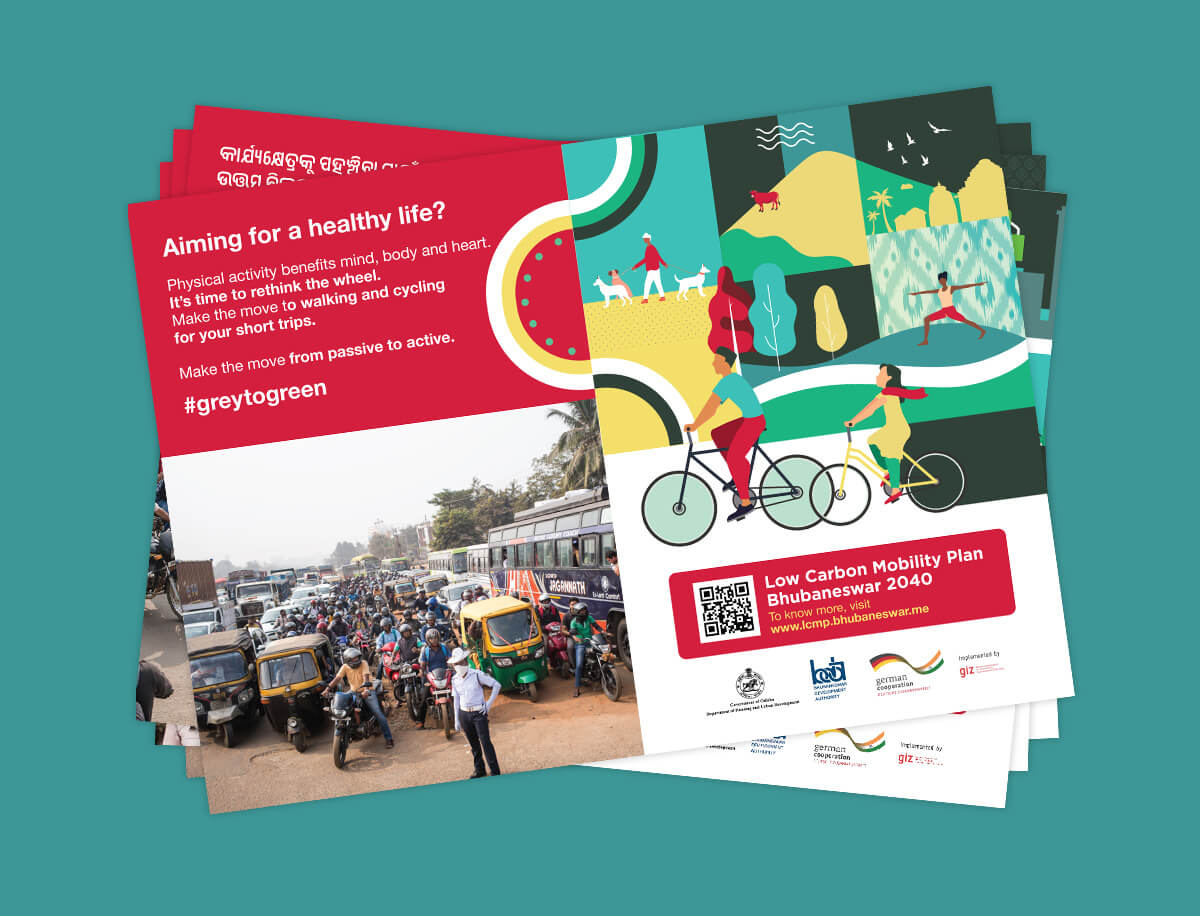

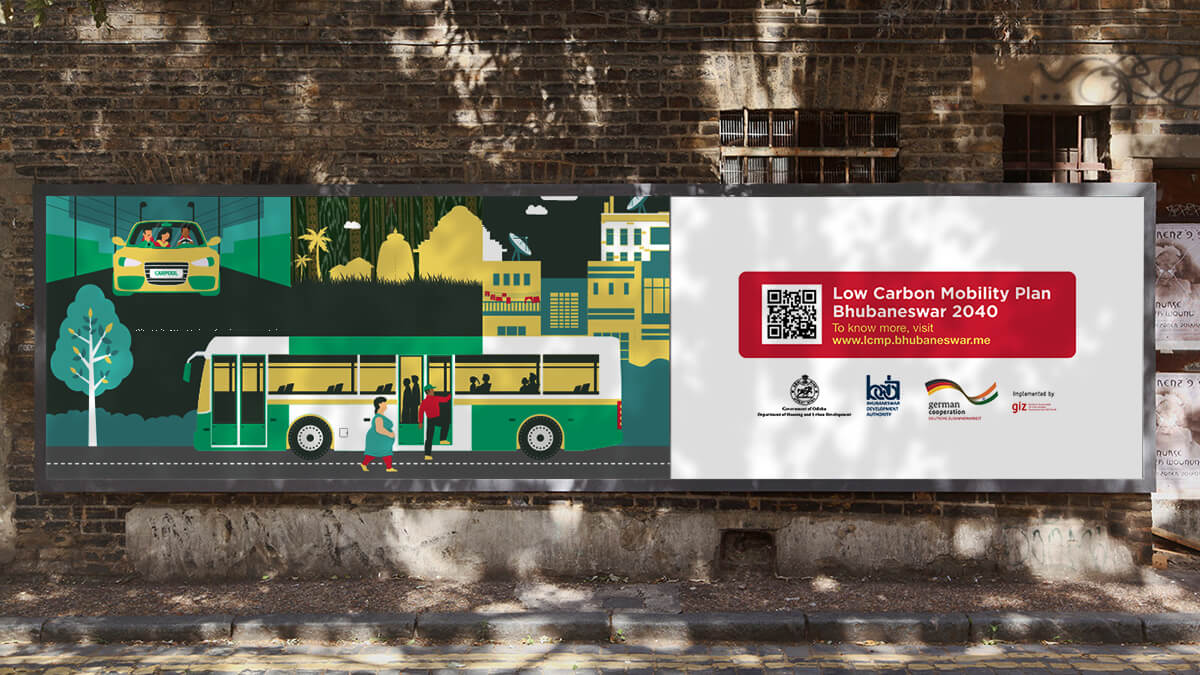
We also visualised other forms of print collaterals for the campaign to become more visible throughout the city and create the impact that we envision it to – wall murals, hoardings, bus stand billboards, bus decals, to name a few.
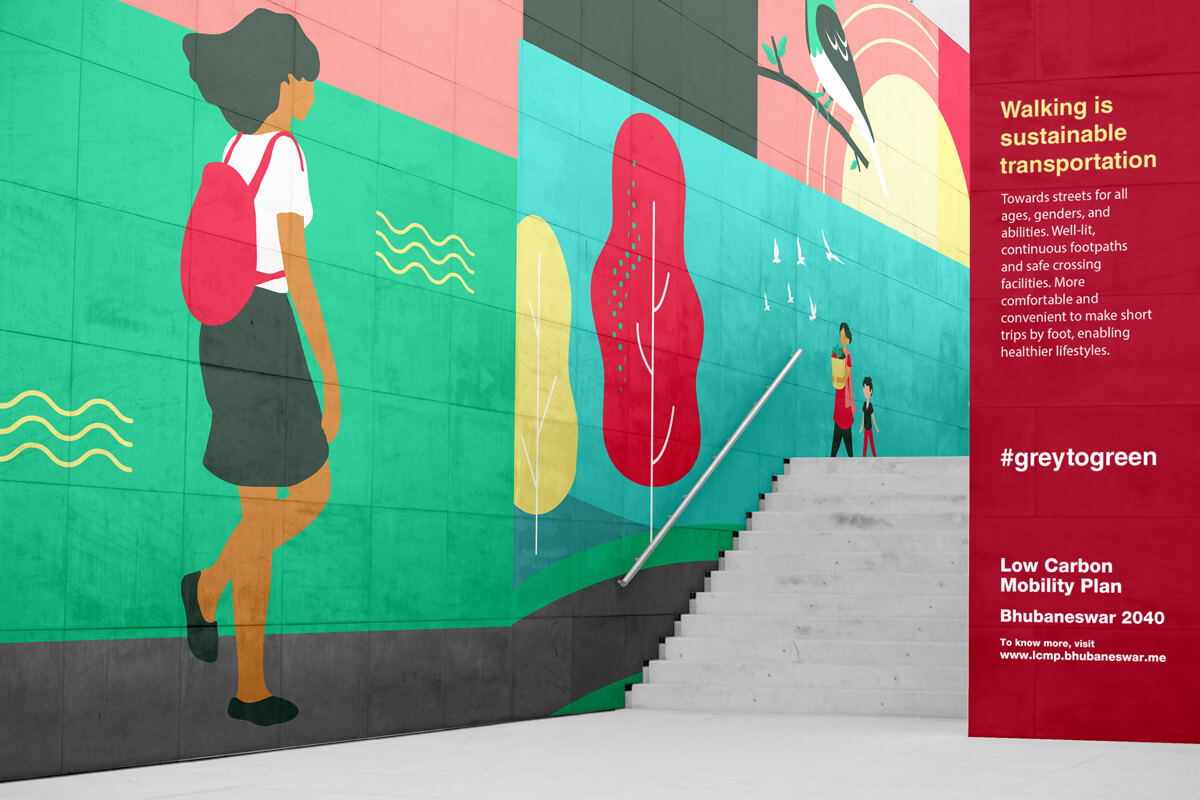
We also created a social media campaign for the same. In the social media posts, we focused on tiny parts of the larger landscape to elaborate on 6 ways towards a low-carbon future in Bhubaneswar. The digital campaign will be released once the plan is live.
We designed a fresh website solely for the Low Carbon mobility Plan. Along with working on its UI and UX, we also created icons and illustrations for the website that aligned with the campaign language, look and feel. The website makes it easy for the viewer to freely download resources like apps and communication material. The full plan will be available on the website for people to read soon after the launch.
You can view the entire website here:
http://wishboxdigital.in/lcmp/

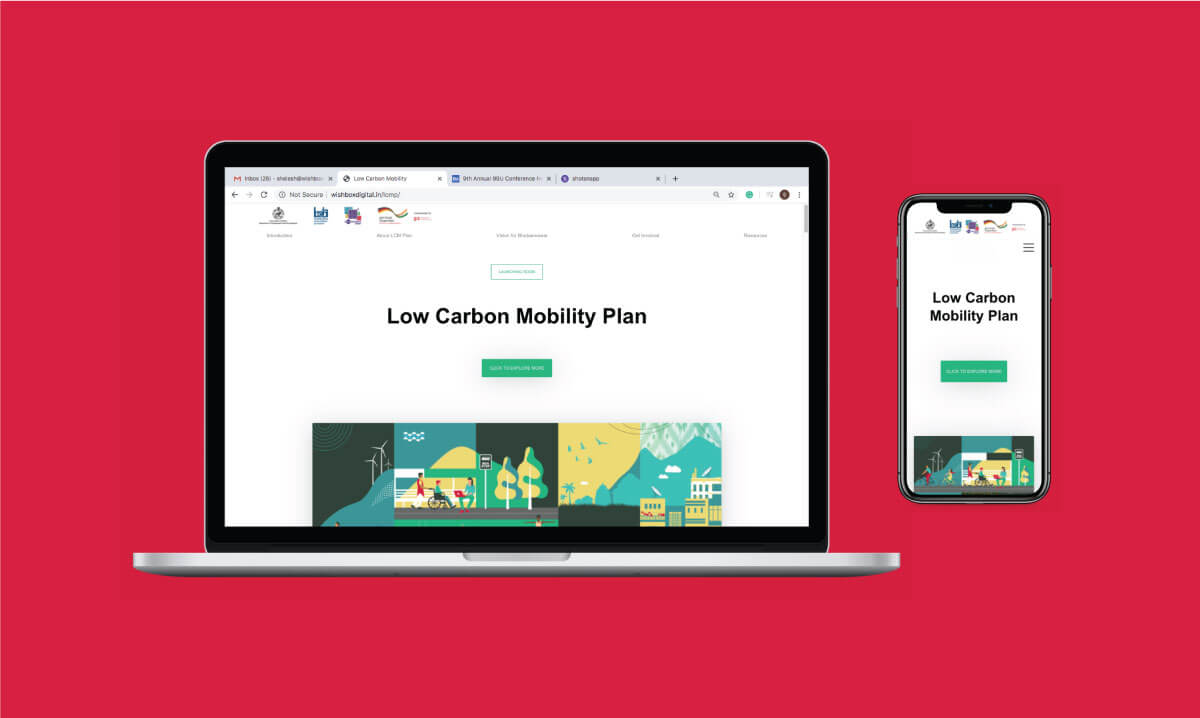
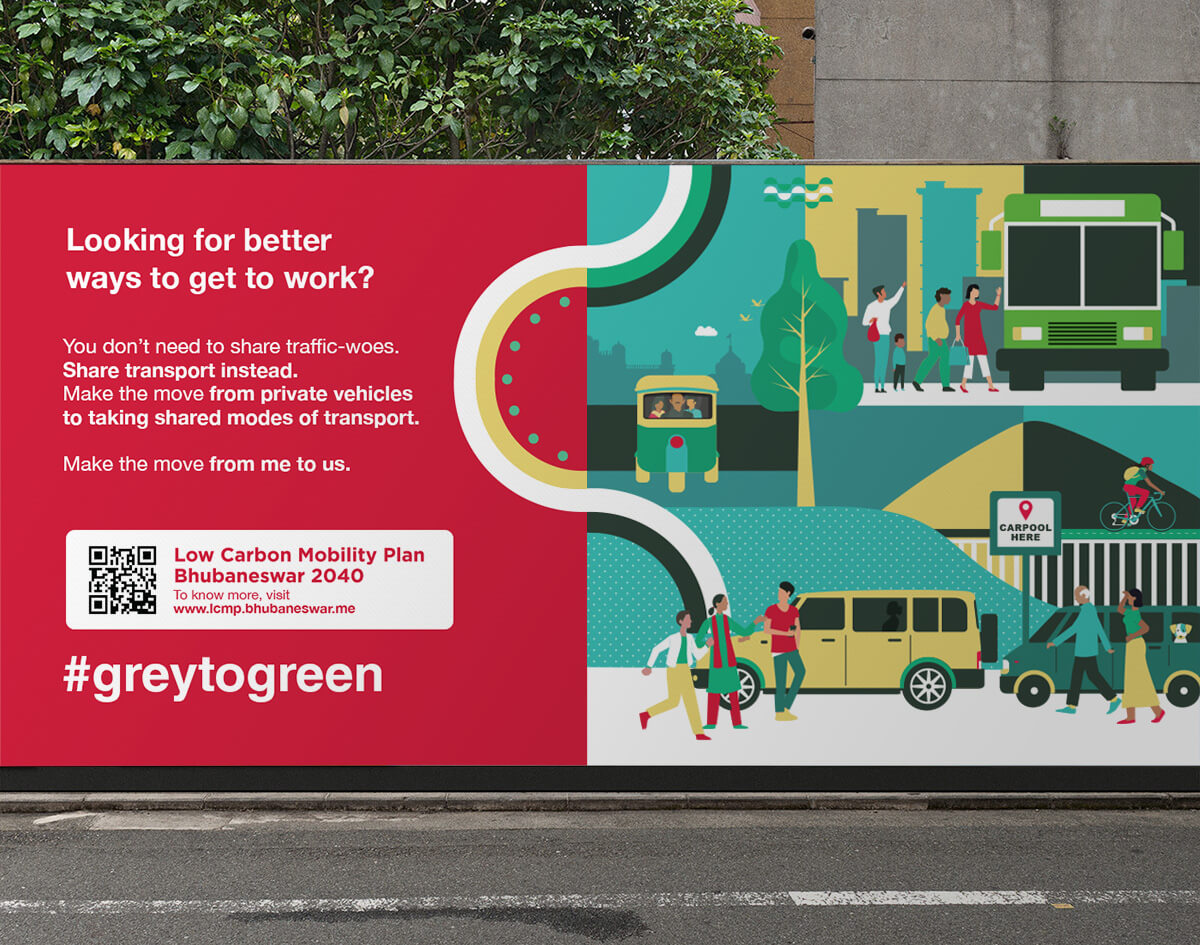
Conclusion
We are looking forward to the launch of the Low Carbon Moblitiy Plan in Bhubaneswar. We’ve got the ball rolling for a greener tomorrow and now we will wait and watch for the impact design can have, and the change design can bring to a city.


